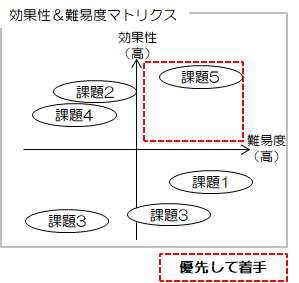Managing an Issue List That Ensures Task Completion | 12 Techniques for Effective PMs to Break Free from Formalism
Back to TopTo reach a broader audience, this article has been translated from Japanese.
You can find the original version here.
Introduction
#"I create an issue list, but it never gets shorter..."
"Every week the same issues remain unstarted..."
Isn't that happening on your team as well?
Issue management is the "engine" for moving a project forward.
However, if issues are left unaddressed or become mere formalities, organizational execution capability drops dramatically.
In this article, we introduce seven common pitfalls and five improvement techniques you can use starting tomorrow. Reconstruct your issues into a "digestible issue list" and propel your project forward.
Common Pitfalls in Issue Management and How to Address Them [Basic Edition]
#We touched on some points in the previous article "Starting with the Difference between 'Problems' and 'Issues' — A Beginner's Guide to Issue Management for New Project Managers". This time, we present seven common pitfalls and concrete countermeasures.
1. Issues Are Not Defined as Actions
#"'Revenue did not meet the target' or 'There are concerns about quality' are just 'problems.'
An issue is an 'action' clearly indicating who will do what by when."
Bad example: Increase sales
Good example: "By XX/XX, create a design and implementation plan for a new campaign (Assignee: Yamada)"
2. Ambiguous Assignees Lead to Neglect
#"'Team' or 'TBD' makes responsibility unclear.
Specify the assignee by name and update it immediately when it changes."
3. No Completion Deadline Set
#"Issues without deadlines will never be started.
Always set a completion deadline; if that's difficult, establish a 'holding deadline' with your supervisor."
4. Overgrown Issue Lists Become Unmanageable
#"When To-Dos, memos, and WBS tasks are all mixed together, important issues get buried.
Separate issues, tasks, and notes, and include only the truly important ones in the issue list."
It's said that one PM can effectively manage about 50 issues as a guideline.
5. Priority Levels Have Become Superficial
#"If your list is full of 'High' priorities, you can't judge what's most urgent.
Break it down into five levels (e.g., Blocker to Trivial) and discuss in priority order during reviews."
6. No Tracking of Start Dates
#"What matters more than a 'completion date' is 'when you start.'
Record planned start dates and reconfirm deadlines when you actually begin work."
7. Being Too Attached to Tools Leads to Inefficiency
#"Saying 'It has to be this tool' is a sign of stopped thinking.
Flexibly choose tools that suit your purpose and consider using multiple tools as needed."
Strategies for More Effective Issue Management [Advanced Edition]
#Once you've got the basics down, move to the next step. Here we introduce advanced techniques to enhance the effectiveness of issue management.
1. Allocate Time for Issue Inventory
#At sprints, milestones, and other checkpoints, clear out and organize your issue list.
- Structure issues to identify bottlenecks
- Reevaluate issue priorities
- Determine which issues need escalation
Reference: Structuring Issues
#When issues accumulate, organize them structurally and look for leads to resolution.
The diagram below shows the flow from issue inventory to identifying core issues.

By classifying and structuring the disparate issues, the essential (core) issues become apparent.
Focusing on solving the core issues can potentially chain-react and resolve multiple other issues.
Reference: Using an Effectiveness-Difficulty Matrix
#The diagram below is an example of a decision matrix organized along two axes: effectiveness and difficulty.

Issues with high effectiveness and low difficulty (top right in the diagram) should be prioritized for action.
This matrix enables rational decision-making.
Note: Effectiveness refers to cost-effectiveness, i.e., the expected outcome relative to cost.
These diagrams are also useful in review meetings and issue inventory workshops. Use them as a common perspective for the team and as decision criteria to make the most effective use of limited resources.
2. Clarify the Definition of Resolution
#"To resolve an issue, clarifying the goal is indispensable.
Defining 'what constitutes a resolution' prevents deviations in actions.
This prevents confusion between ends and means, guiding you toward an essential resolution."
3. Pay Attention to Unquantifiable Indicators
#There are "hidden issues" not listed on the issue list.
- Detect declines in team members' motivation
- Don't overlook subtle misalignments in interpersonal relationships
PMs should sense those signs that don't show up in numbers.
4. Appoint a "Garbage Collector"
#Set up someone to take on the "floating issues" that no one picks up.
- Establish a temporary team or dedicated person to clarify ownership
- Collect and address issues with no assigned assignee
5. Generalize Issues and Incorporate Them into Your Processes
#Recurring issues may indicate process flaws.
- Use recurring issues to drive process improvements
- Leverage them for risk management in other projects
Record issues and turn them into safeguards for the future.
How to Choose Tools That Support Execution
#Essential Tool Features
#- Settings for assignee, deadline, priority, and status
- Auxiliary functions like notifications, filters, and reporting
- Ease of use in the UI and adoption by the team
Cloud-Based vs. On-Premises
#- Cloud-based: Easy to implement, with automatic updates
- On-premises: For companies that prioritize security and customization
Tips for Successful Implementation
#- Try a small-scale pilot
- Secure team agreement before rollout
- Design operational rules alongside the tool
Conclusion: Turn Issue Management into a "Results-Driven Operation"
#Issues are not "done once written"; they only matter when action is taken.
The 12 practices introduced in this article are all small tweaks you can start immediately.
- Start with "Specify assignees" and "Mandatory deadlines"
- Not only track the issue list but also sense the team's current climate
- Turn emerging issues into hints for the future
Begin bit by bit where you can, and manage issues so that they propel your project forward.
We hope your project's issue list becomes a "working system" and helps you take even one step forward.
